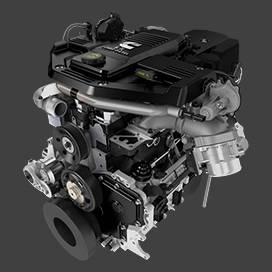Dec . 11, 2024 05:24 Back to list
Troubleshooting a Stuck Emergency Brake Drum and Safe Solutions to Resolve It
Understanding the Impact of a Stuck E-Brake Drum
Modern vehicles are equipped with a variety of braking systems designed to ensure safety and reliability. One crucial component of this system is the emergency brake, also known as the parking brake. While it is an essential feature for securing a vehicle when parked, it can sometimes encounter issues—chiefly, the phenomenon of a stuck emergency brake drum. This article delves into the mechanics of the parking brake, the causes of a stuck drum, and potential remedies for this frustrating issue.
The Mechanics of the Emergency Brake
The emergency brake operates independently from the main braking system, which is crucial in preventing a vehicle from rolling away when parked. In most cars, the e-brake is either a lever located between the front seats or a pedal that must be pressed down. The system often employs a cable connected to the rear brake drums or discs, which, when engaged, clamps down on the brakes to hold the vehicle stationary.
The brake drum functions by allowing brake shoes to expand against the drum surface when the e-brake is activated. Over time, dirt, rust, or a lack of lubrication can impede this mechanism, causing the brake shoes to stick to the drum. When this occurs, the e-brake may not release fully, leaving the vehicle vulnerable to damage and the driver facing challenges when trying to operate the vehicle normally.
Common Causes of a Stuck E-Brake Drum
1. Corrosion One of the most prevalent reasons for a stuck emergency brake drum is corrosion. Brake components are subject to moisture and dirt, leading to rust accumulation. When the elements of the e-brake become corroded, they can seize, preventing the proper functioning of the brake system.
2. Debris Accumulation of dirt, dust, and debris can obstruct the brake’s moving parts. This blockage may prevent the brake shoes from retracting when the e-brake is disengaged, leading to unnecessary friction against the drum.
3. Cable Issues The e-brake operates via a series of cables. Over time, these cables can stretch, fray, or corrode, impairing their ability to function correctly. If the cable that controls the drum is damaged or misaligned, it will not release the brake shoes effectively.
4. Improper Adjustment Like any mechanical system, the e-brake requires proper adjustment to function optimally. If it is too tight or misaligned, it may lead to the brake shoes constantly dragging against the drum, resulting in a stuck drum.
stuck e brake drum

Diagnosing and Resolving the Issue
If you find your vehicle’s emergency brake drum is stuck, diagnosing the problem is the first step. Here’s how to approach it
- Lift the Vehicle Begin by safely lifting the vehicle using a jack. Ensure you secure it with jack stands to prevent accidental falls.
- Inspect the Drum Remove the wheel and inspect the drum for any visible signs of rust or debris. If you notice significant corrosion, it may require replacement.
- Examine the Cables Check the e-brake cables for signs of wear and tear. Replace any frayed or damaged cables as necessary.
- Test the Mechanism Pull the e-brake lever or press the pedal to see if there is any movement in the brake shoes. If they do not retract, you may need to manually adjust or lubricate the mechanism.
- Professional Help If diagnosing and fixing the problem seems too complex, don’t hesitate to seek help from a professional mechanic. They possess the expertise and tools necessary to address the issue effectively.
Preventive Measures
To avoid future problems with a stuck e-brake drum, regular maintenance is key. Inspect your braking system periodically, especially before long trips. Clean and lubricate components as needed, and ensure that the e-brake is properly adjusted.
In conclusion, a stuck emergency brake drum is a common issue but can have significant consequences if left unaddressed. By understanding the mechanics and potential causes, drivers can take proactive measures to keep their braking systems operating smoothly, ensuring not only their safety but also the longevity of their vehicles.
-
Durable Brake Drum MAZ for Heavy Duty Trucks | High Performance
NewsAug.26,2025
-
FUWA: Premium Quality, Reliable Performance & Innovative Solutions
NewsAug.25,2025
-
Liza Brake Drum: Superior Quality & Performance for Safe Driving
NewsAug.24,2025
-
Iveco Brake Drum | Premium OE Quality for Daily & Eurocargo
NewsAug.22,2025
-
Your Brake Drum Man: Quality & Performance Parts
NewsAug.21,2025
-
Explore Japan: Ultimate Travel Guide & Authentic Experiences
NewsAug.19,2025
